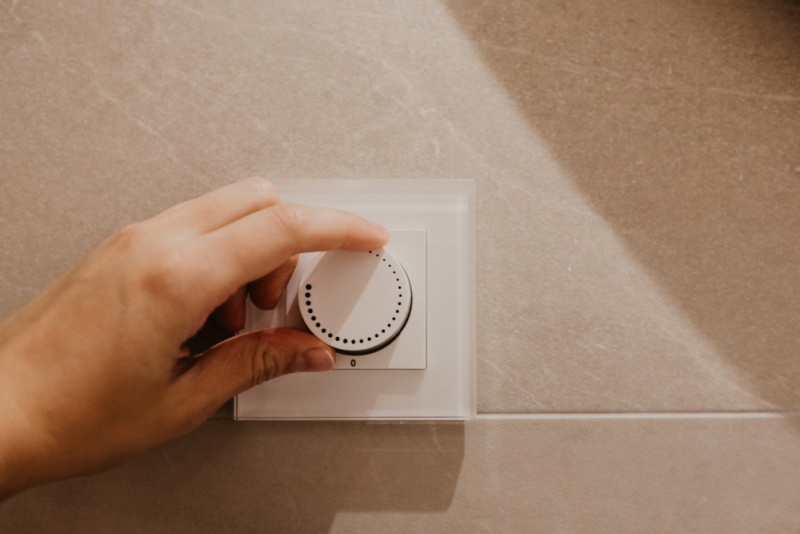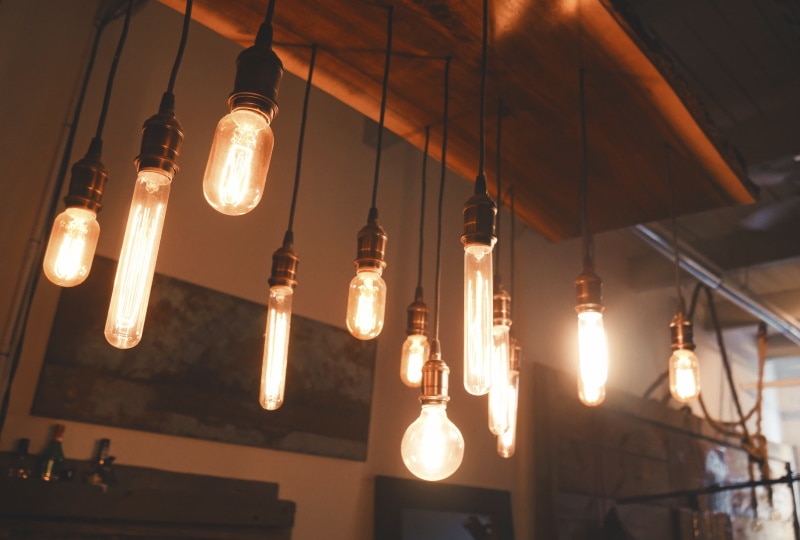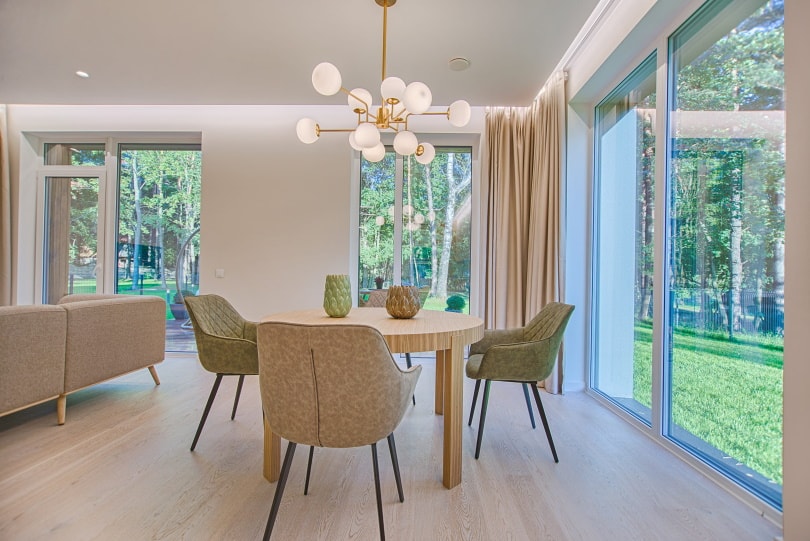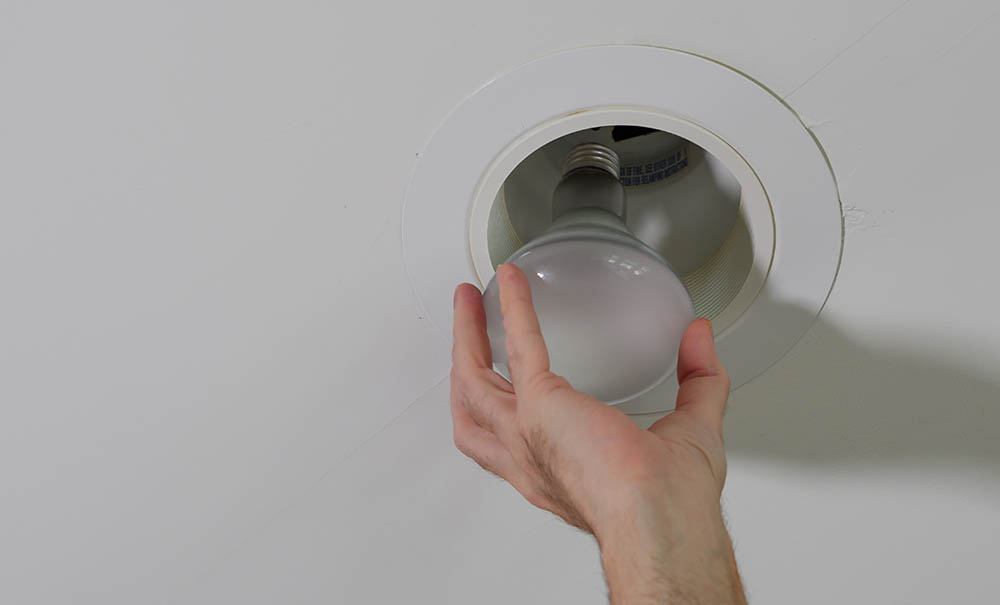What Are Dimmable Light Bulbs? Pros, Cons, & FAQ
-

- Last updated:

Whether you are on a romantic night out, watching a movie, or playing a video game, the environment should be perfectly set for relaxing. Dimmable lights can help set the ideal atmosphere.
Traditionally, only incandescent bulbs were easily dimmable. But technology has changed, and today, LEDs can be dimmed too, and come with countless benefits. On the one hand, dimmable lights help homeowners save a lot of money that would otherwise be channeled to energy bills, and on the other hand, they are complex and slightly expensive. Eager to learn more? Let’s dive deep into the working mechanism of dimmable light bulbs, their types, and where they are used.
How Do Dimmable Light Bulbs Work?
Dimmable lights are bulbs whose brightness level in lumens can be controlled. These lights make it possible to control the level of illumination, change the visual appearance of a place, and save energy bills.
As stated, it was easy to dim an incandescent bulb with or without a dimmer switch because their design makes it possible. Simply control the current flowing through the filament to attain the intended brightness level.
A typical incandescent bulb has a filament enclosed within a small airtight quartz bulb which is vacuumed or filled with an inert gas to stop oxidation. The filament connects to electrical wires embedded in the bulb’s socket to a source of power. After switching on the bulb, electrical current flows through the filament, heating it. The filament then produces light from heat.

When you alter the current flowing through the filament, you can dim or brighten the bulb. Luckily, homeowners can use a dimmer switch. A dimmer switch is a device connected to a bulb that alternates the voltage flowing through it to control the intensity of light. Voltage and current have a direct relationship. So, when a dimmer switch reduces the voltage, the current drops at the same rate, subsequently dimming incandescent light bulbs.
Another type of bulb you can also dim is the LED. They are the most prevalent sources of light, and reports show that around 47% of Americans are currently using them indoors. However, due to the complex nature of their design, dimming them is not that straightforward compared to incandescent bulbs.
Here are several ways it is achieved.
1. Analog Method
Dimming LEDs the analog way involves altering the current flowing through them using resistors. A resistor is a small electrical device that is connected to a circuit to “choke” the current flow. You can connect one or several of them on the LED’s input lines, depending on how they are rated. This automatically dims the bulb.
The only downside is alternating current may affect the color and uniformity of light LEDs produce. Hence, getting undesired results is not that uncommon.
2. Pulse Width Modulation (PWM) method
PWM is a fancy term for a digital signal that switches LEDs on and off at a speed faster than the eye can see. What determines the light intensity is the ratio of the on and off cycles. If the on signal is longer than the off signal, the bulb will be brighter. Contrary, you will tune in to a twilight environment when off signals are longer than on.

3. Constant Current Reduction (CCR) method
In CCR, the current flowing through the bulb is maintained at the required interval and only alternated to vary the output.
Similar to resistors, the CCR method will control current flow precisely to provide particular characteristics of light. For example, the color temperature of a bulb will be 3000K at 700mA of current and reduced by 300 when the current is halved to 350mA.
What Are the Different Types of Dimmable Light Bulbs?
Incandescent and LEDs are the major types of dimmable light bulbs, provided they have a dimmable light symbol.
To clarify a few things, both are compatible with dimmer switches and smartphone applications. Also referred to as smart switches, the latter are distinct to the manufacturer. For example, if you buy a smart dimmable bulb, you will get the link to download the app which is compatible with the bulb. It cannot work with another app unless specified by the manufacturer or vendor.
Under smart switches, there are Bluetooth and Wi-Fi-enabled systems. Bluetooth is an old technology that allows phones to link up with bulbs within a specific range. Having limited range posed a problem that led to the development of Wi-Fi-enabled dimmable bulbs—the bulb can be operated irrespective of your location.

Where Are Dimmable Lights Used?
Dimmable lights are used both indoors and outdoors. Buy and fit them in bedrooms, reading rooms, washrooms, and living rooms.
Fitting dimmable lights in bedrooms is a brilliant idea since brightness level affects sleep directly. While we intuitively know that sleeping in darkness is comfortable, pitch-black rooms are not ideal for some people. Solve the problem by fitting these bulbs in rooms to have a peaceful night.
Besides that, a dimmable bulb may be helpful when reading. Lastly, using dimmable lights outdoors protects your home and saves energy bills.
Advantages of Dimmable Lights
By reducing inputs such as current and voltage, using dimmable lights saves energy. Balancing ambient and electronic light also prevents the eyes from overstraining, which is good for your health. Additionally, reading in a comfortable environment improves concentration. All electronic devices have an estimated lifespan which is calculated in hours. Typically, when an LED produces maximum light, it can last for up to 50,000 hours. If you divide the light produced by half, the LED’s lifespan may be multiplied by up to 2 times—around 100,000 hours.
Lights play an important role in interior décor too. But don’t allow them to limit your creativity which is most likely to happen when choosing wall colors. Dark walls require brighter bulbs to meet lighting needs since most of the light is absorbed. Shifting to brighter walls means changing to dimmer bulbs.
With dimmable bulbs, simply adjust the brightness level to match them with your present interior decor designs.

Disadvantages of Dimmable Lights
Even though dimmable lights boast the latest technologies and energy-saving plans, there are a few pitfalls to owning them. When compared to standard LED and halogen bulbs, dimmable lights are expensive. They table costly drivers and technologies, pushing their prices high.
Dimmable lights require dimmer switches, special sockets, and motherboards. Take your time to understand how they work before buying.
Dimmable Bulbs FAQs
Can I fit dimmable bulbs into non-dimmable fittings?
It is not recommended because they are different power appliances. Any sort of adjustment to a dimmer bulb, be it accidental or intentional, will cause the bulb to melt and blow up. To avoid inconveniences, use certified dimmer bulb fittings or consult experts for advice.
Are dimmable bulbs a good fit for recessed lighting?
Recessed lighting bulbs are installed inside a ceiling or wall to appear as if the light is coming from a hole. Their main trade-off is they are relatively permanent, and you can use both dimmable and ordinary bulbs.

Why are my dimmable bulbs buzzing?
Buzzing is a sign of many things. First, if there are faulty connections, many appliances are connected on the same line, or you are using a dimmer switch to lower voltage, an incandescent bulb may buzz. This is not a sign that your bulb is almost burning off, but the filament is vibrating to respond to changes in voltage. Second, in LEDs, it may be electromagnetic interference of the electrical arc. Lastly, it may be one of the rare cases where you bought a faulty bulb.
Conclusion
Dimmable light bulbs are special LED or incandescent bulbs whose brightness can be adjusted by a smart or dimmer switch. They are common in many homes and offices and are good for reading, sleeping, and relaxing. Compared to typical light bulbs, you can save a lot from them since they use less electricity and last longer.
- Related Read: 9 Types of Outdoor Light Bulbs
Featured Image Credit: HENADZI KlLENT, Shutterstock
Contents

